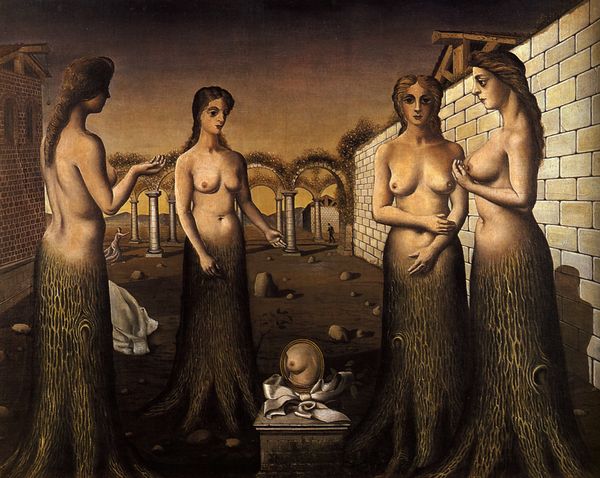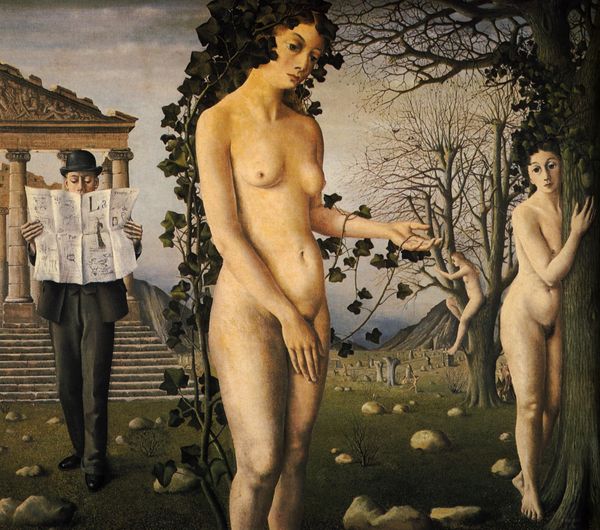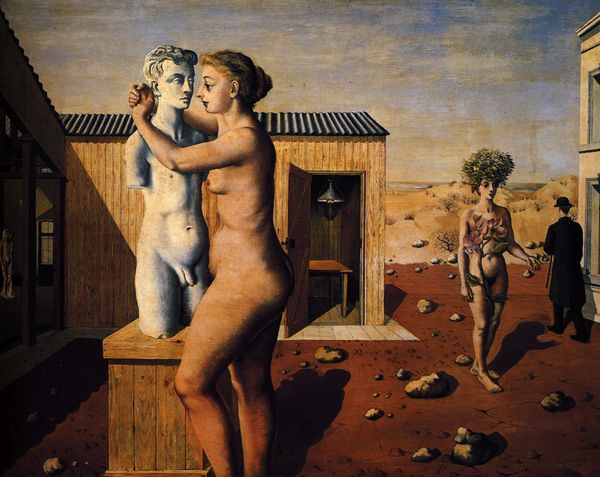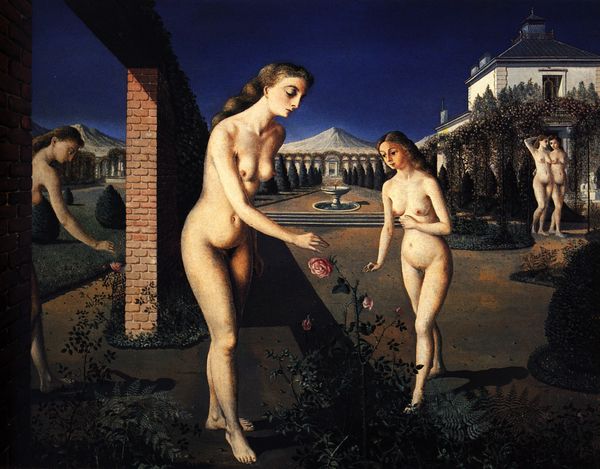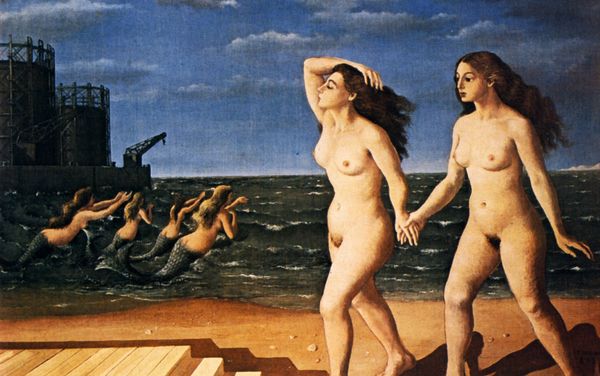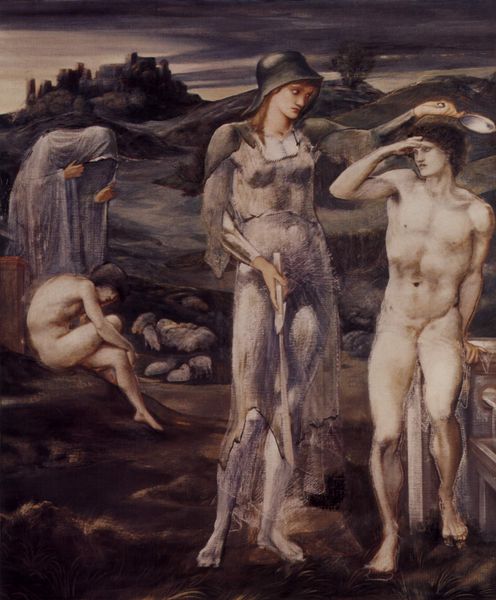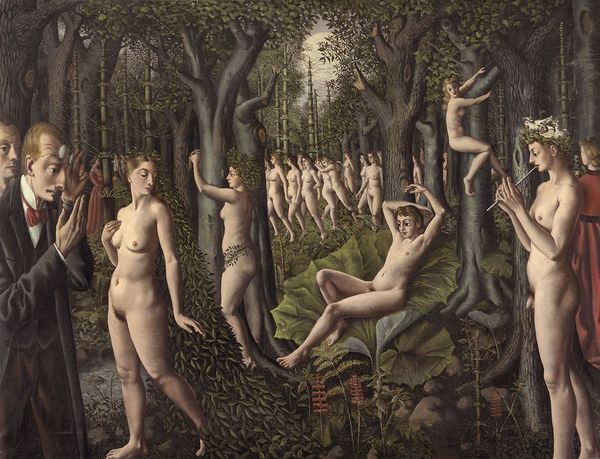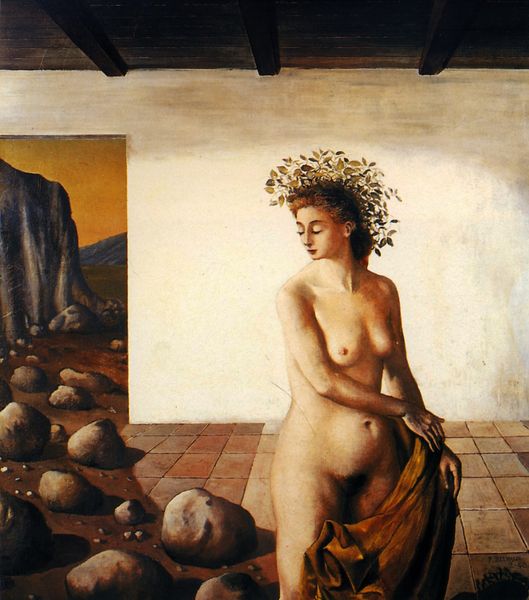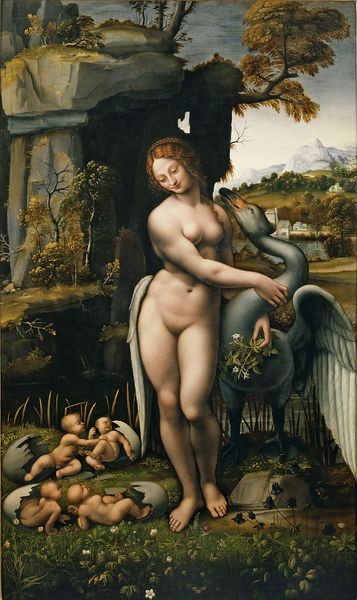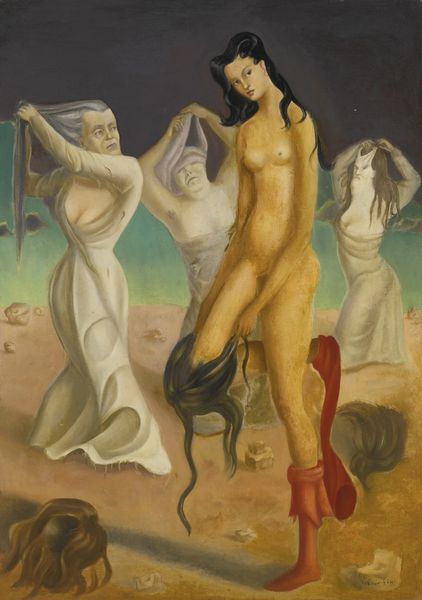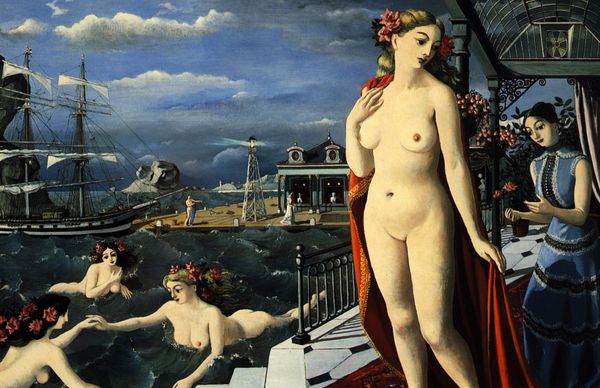
painting, oil-paint
#
painting
#
oil-paint
#
landscape
#
figuration
#
female-nude
#
costume
#
human
#
nude
#
surrealism
Copyright: Paul Delvaux,Fair Use
Editor: Paul Delvaux's "Night Visit," painted in 1938 using oil paint, has a dreamlike quality. The composition feels almost staged, with the figures seeming frozen in time. How do you interpret this work, especially its depiction of the female form and the overall unsettling atmosphere? Curator: The "Night Visit," situated within the surrealist movement, certainly unsettles. Delvaux’s figures, particularly the female nudes, are indeed staged, presented almost as mannequins. What happens when we view them not just as objects, but as stand-ins for a suppressed collective feminine consciousness emerging during a period marked by extreme social and political upheaval? Considering Delvaux's own historical context and the rise of oppressive regimes in Europe, might this painting function as a subtle form of resistance? Editor: That's fascinating. I hadn't considered the figures as potential symbols of resistance. The almost ritualistic offering of the cup by the figure in white could be interpreted as some kind of call to action, then. Curator: Precisely. And how does this interaction challenge conventional representations of women within art history? Are we seeing a reclaiming of agency, where the nude form becomes a vessel for something more than passive beauty? Delvaux isn’t just painting nudes, he’s crafting a visual language rooted in dreamscapes to articulate subconscious anxieties and desires of the time. He’s putting forward uncomfortable conversations around social and political repression. Editor: So, it’s less about the male gaze, and more about a potential for self-discovery and empowerment of the collective feminine voice, however muted? Curator: Exactly. It’s about dismantling traditional power dynamics within the art historical canon and broader society. What have you taken away from our conversation? Editor: I now recognize a deeper dialogue that transcends mere representation, viewing it instead as a canvas for a feminist discourse! Curator: Indeed, the canvas then turns into a conduit for social commentary and change.
Comments
No comments
Be the first to comment and join the conversation on the ultimate creative platform.
